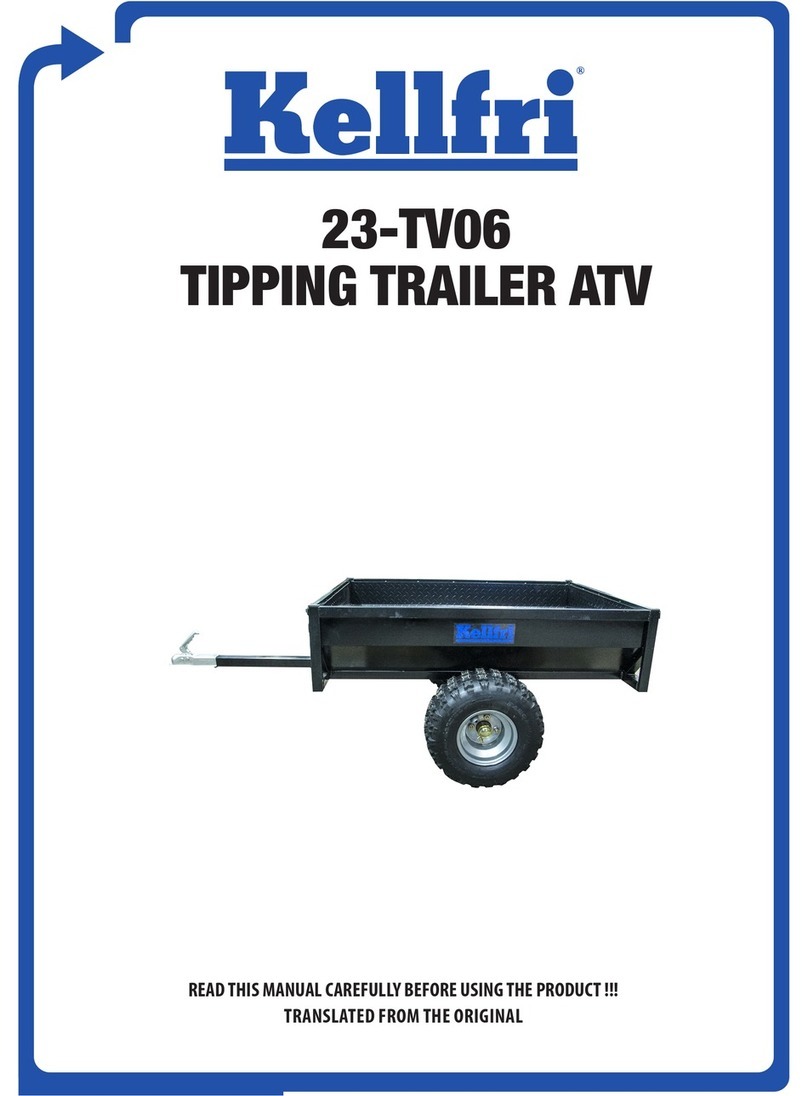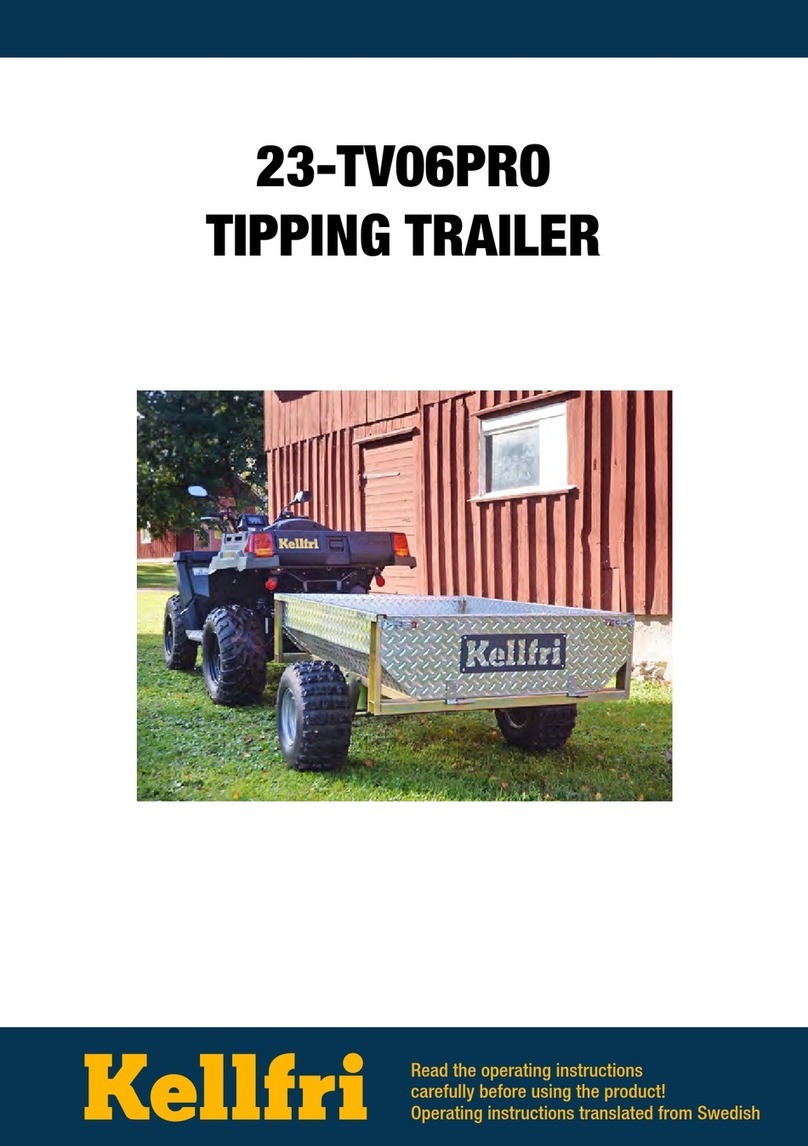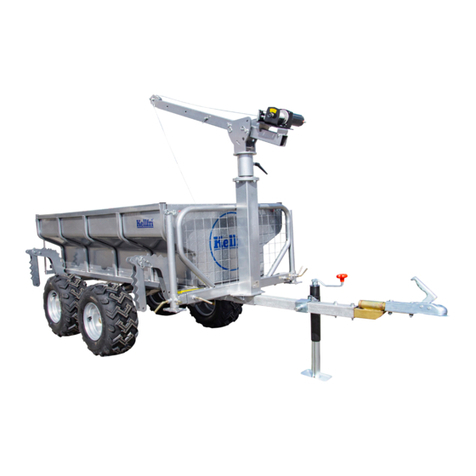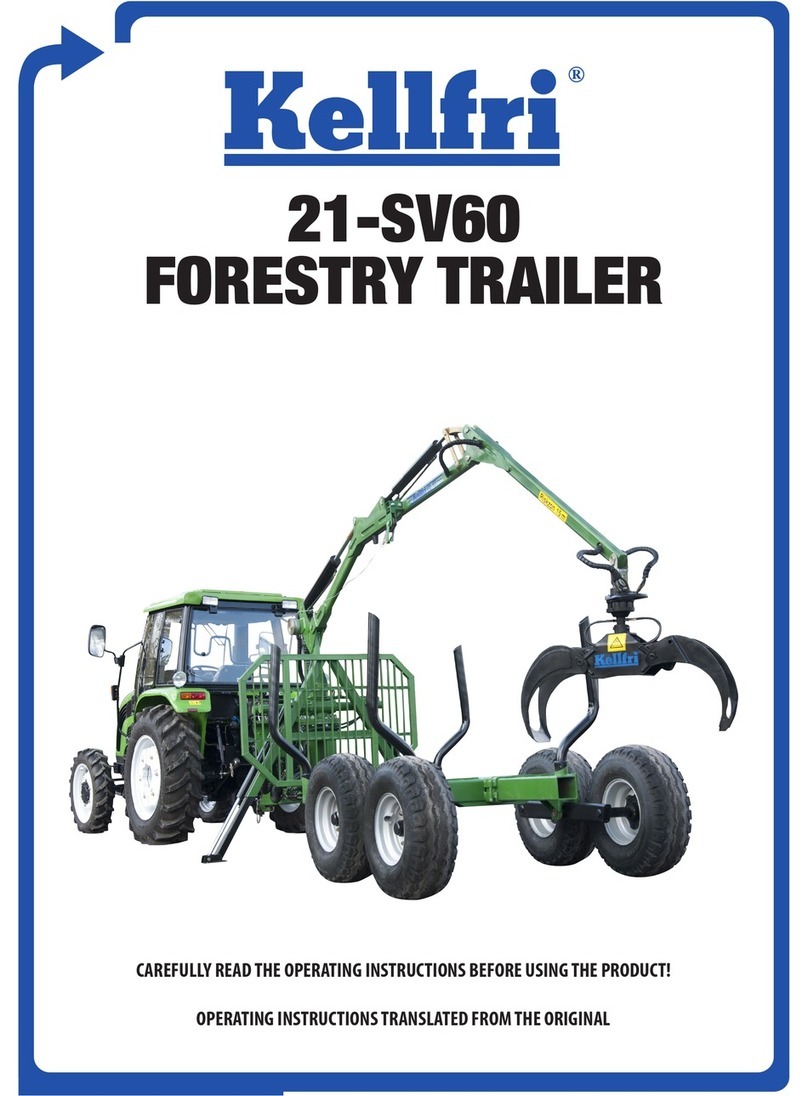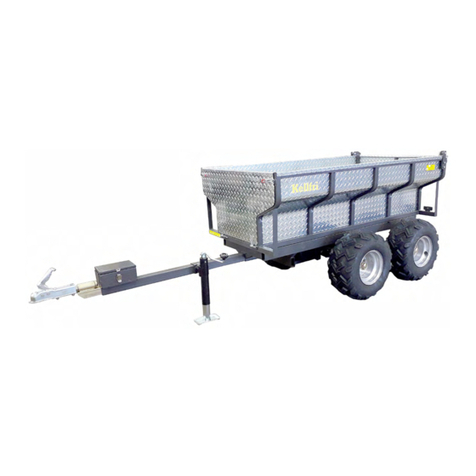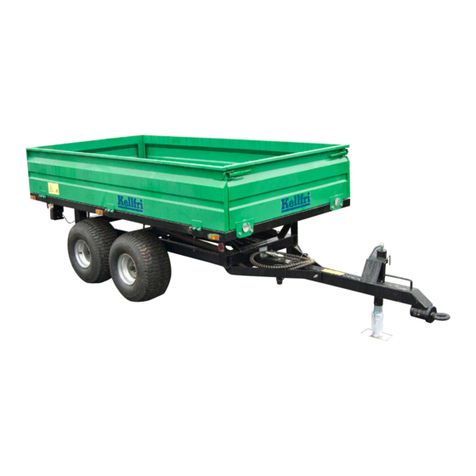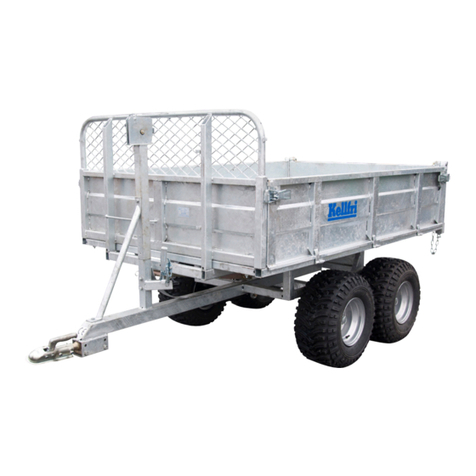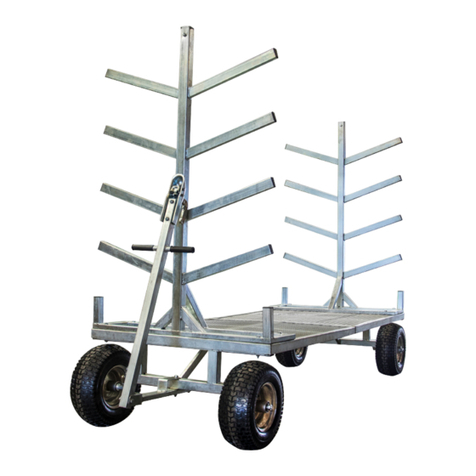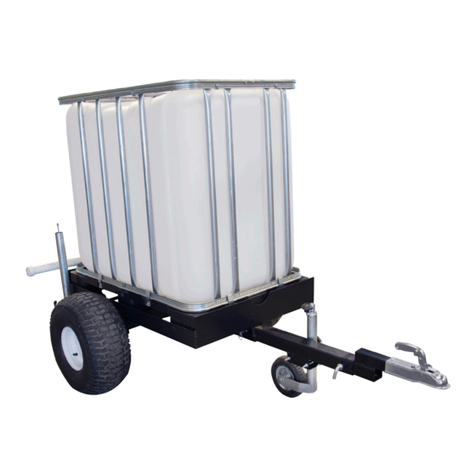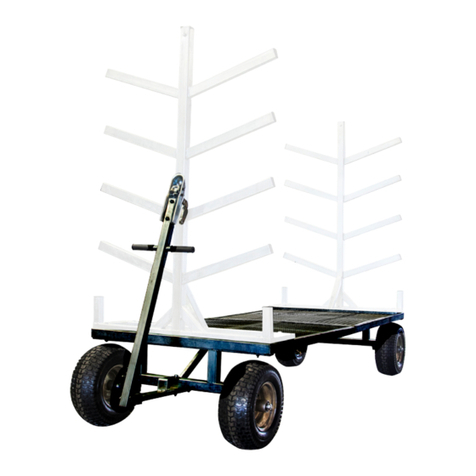
Table of contents
PRODUCT SAFETY INFORMATION
Carefully read the instruction manual before using the product.
Compliance with the safety instructions requires that the forestry trailer/tipping trailer is
only used as described in these instructions. It is the user’s responsibility to read through
the instructions and comply with them.
• Read the operating manual for the quad bike.
• Always check that the performance of the machine combination to be used with the
trailer guarantees safety and functionality.
• Never overload the trailer.
• Never leave the driver’s seat until the brakes on the towing vehicle have been engaged.
• The risk area is 15 metres. Only the operator is allowed to be within the risk area while
the trailer is in use.
• Under no circumstances are operators allowed to stand under suspended loads.
• Do not leave a loaded trailer parked unsupervised.
• When unhitching the trailer, it must be empty and on a level surface with the trailer
wheels secured using suitable brake blocks.
• To stop the trailer moving in the event of an emergency, engage the brakes on the quad.
• Be aware of the crush risk when carrying out winching work.
• As the trailer is not tted with lights, t a magnetic rear light or similar where required.
• The trailer is tted with a ball coupling for a 50 mm towing eye. Max. pulling force 1000 kg.
Replace the ball coupling after excess wear.
• EU regulations stipulate how fast a rig with a non-brake trailer is allowed to go.
Take care to comply with these regulations. Max 40 km/h. An SMV sign must be attached
when travelling on roads. IMPORTANT! Adapt the speed when the trailer is fully loaded.
• Keep the workplace clean and free of obstacles in order to minimise the risk of accidents.
• IMPORTANT! The operator (the person tipping the oor) must stand behind the crane.
• People must not be in the trailer! The trailer is not intended for transporting people,
animals or explosive substances.
HITCHING THE TRAILER
• Read through the operating manual in its entirety.
• Check the ball coupling on the trailer. Then hitch the trailer onto the towing vehicle.
Make sure that the trailer cannot come loose while operating
• Operate and carefully check movements of the equipment.
• Check the air pressure in the tyres. See info on the sidewalls of the tyres for exact values.
Do not exceed the maximum pressure!
LOAD CORRECTLY
Distribute the load evenly on the trailer. Never exceed the trailer’s maximum permitted load
and the greatest
permitted ball pressure. WARNING! Never load above the height of the gates.
Check that the trailer is undamaged before connecting it to the vehicle.
• Loads must be spread evenly across the trailer. All protruding loads should be well anchored.
• Place the stabilisers on the ground for increased stability when loading.
• The brakes on the ATV must be engaged when loading and unloading.
• Point the crane arm in the same direction as the wire rope has to work.
• Calmly and methodically practise the movements used for handling the wire rope crane.
NOTE! Only tip the trailer on a level surface.
